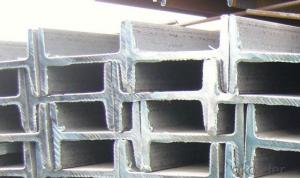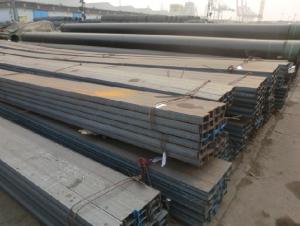High Quality Hot Rolled Structural Steel I Beams
- Loading Port:
- China main port
- Payment Terms:
- TT or LC
- Min Order Qty:
- 50 m.t.
- Supply Capability:
- 100000 m.t./month
OKorder Service Pledge
OKorder Financial Service
You Might Also Like
Specifications of High Quality Hot Rolled Structural Steel I Beams
1. Invoicing on theoretical weight or actual weight as customer request
2. Length: 5.8m, 6m, 9m, 12m as following table
3. Sizes of Steel I-Beams: 80mm-270mm
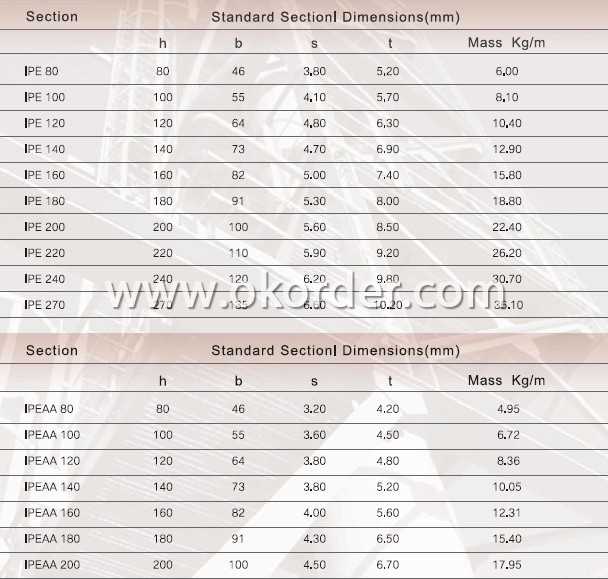
Dimensional Specifications of Steel I-Beams: EN10025, ASTM, GB Standard, JIS, etc.
Material Specifications of Steel I-Beams: EN10025, S235JR, GB Q235B or Equivalent
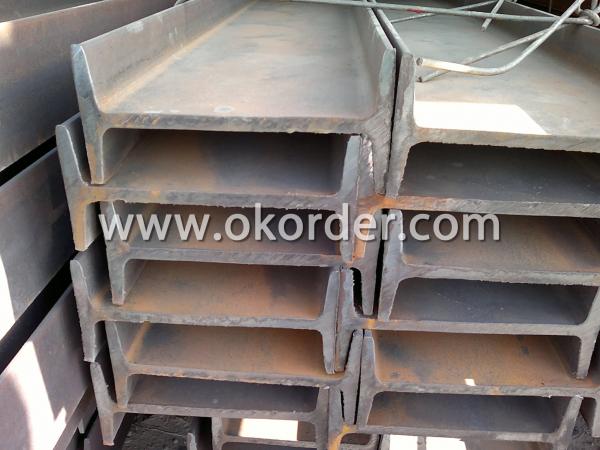
Applications of High Quality Hot Rolled Structural Steel I Beams
Commercial building structure
Pre-engineered buildings
Machinery support structures
Prefabricated structure
Medium scale bridges
Package & Delivery of High Quality Hot Rolled Structural Steel I Beams
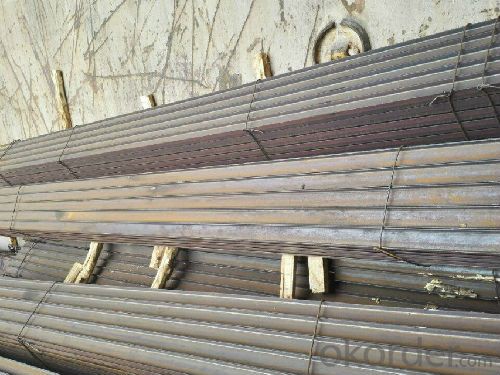
1. Package: All the products are packed in bundles and tied by steel wire rod then put into containers or in bulk cargo. Each bundle of I-Beam will be hung with the markings of CNBM or as the requriements of the customer. Each bundle contains about 50 pieces.
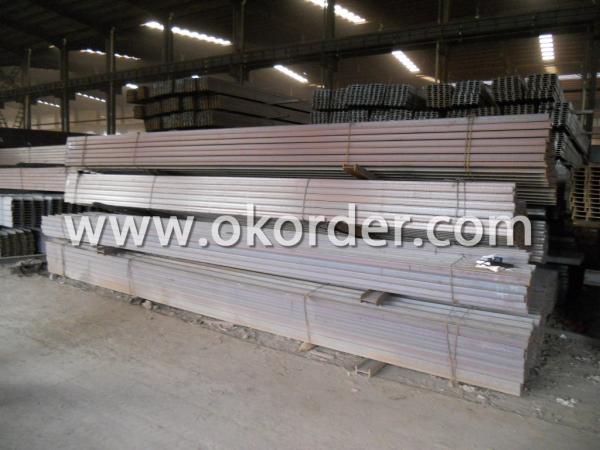
2.Tag mark: there will be tag mark tied up on the bundles. The information usually including supplier logo and name, product name, made in China, shipping marks and other information request by the customer.
If loading by container the marking is not needed, but we will prepare it as customer request.
3. Delivery: The Steel I-Beams will be delivered to the loading port in 45 days after receiving your advance payment or the original L/C at sight.
4. Transportation: the goods are delivered by truck from mill to loading port, the maximum quantity can be loaded is around 40MTs by each truck. If the order quantity cannot reach the full truck loaded, the transportation cost per ton will be little higher than full load.
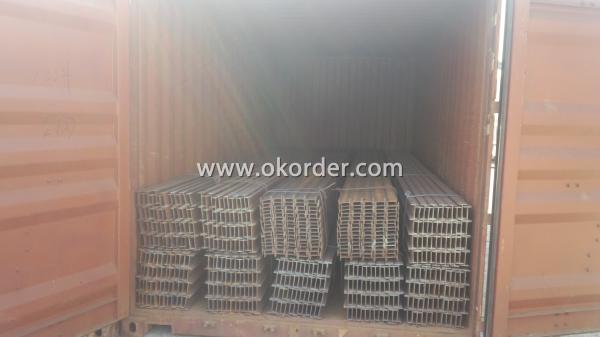
- Q:How do steel I-beams perform in high wind conditions?
- Steel I-beams are known for their exceptional strength and durability, making them a popular choice for structural applications in high wind conditions. When subjected to strong winds, steel I-beams exhibit excellent resistance and performance due to their inherent stiffness and rigidity. The design of I-beams, with their flanges and web, allows them to efficiently distribute the wind load across their entire length. This characteristic helps to minimize deflection and prevent any potential structural failures. The compact shape of I-beams also reduces the occurrence of turbulence and wind vibrations, further enhancing their performance in high wind conditions. Furthermore, steel I-beams have a high strength-to-weight ratio, making them lightweight yet incredibly strong. This attribute allows them to withstand the dynamic forces generated by wind gusts and maintain their structural integrity. In addition to their material properties, steel I-beams can be further reinforced with additional elements such as lateral bracing or diagonal members to enhance their resistance against wind loads. These reinforcements help to minimize the likelihood of buckling or twisting under extreme wind conditions. Overall, steel I-beams are specifically designed and engineered to perform exceptionally well in high wind conditions. Their strength, rigidity, and ability to distribute loads effectively make them a reliable and robust choice for structures exposed to strong winds.
- Q:Can Steel I-Beams be used for power plants?
- Yes, steel I-beams can be used for power plants. Steel I-beams are commonly used in the construction of power plants due to their high strength, durability, and ability to support heavy loads. They provide structural support for various components, including turbines, generators, and other equipment that are essential for power generation.
- Q:Can steel I-beams be used in coastal areas?
- Indeed, coastal areas can indeed utilize steel I-beams. Steel, as a construction material, boasts durability and reliability, enabling it to endure the challenging conditions frequently encountered in coastal environments, such as strong winds, saltwater, and humidity. Nevertheless, it is crucial to carefully choose the suitable steel variant and employ protective coatings to avert corrosion. Stainless steel or galvanized steel are typically employed in coastal regions owing to their ability to resist rust and corrosion. Furthermore, consistent inspection and maintenance are imperative to guarantee the structural soundness of the steel I-beams utilized in coastal areas.
- Q:Can steel I-beams be used for retaining walls or foundation support?
- No, steel I-beams are not typically used for retaining walls or foundation support. These types of structures require specific materials, such as reinforced concrete, that can provide the necessary strength, stability, and durability to withstand the forces exerted by the soil and other external factors.
- Q:Can steel I-beams be used in residential roof structures?
- Indeed, residential roof structures can utilize steel I-beams. Renowned for their robustness and endurance, steel I-beams have become a favored choice for diverse construction endeavors, including residential roofs. Their exceptional load-bearing capabilities permit larger spans, thereby minimizing the necessity for supplementary support columns or walls. Furthermore, steel I-beams possess resistance against warping, rotting, and pest infestations, rendering them a durable and low-maintenance alternative for residential roofs. Nonetheless, it is crucial to seek guidance from a structural engineer or a professional builder to ascertain that the design and installation of the steel I-beams align with the specific criteria and regulations for the residential roof structure.
- Q:Can steel I-beams be used in coastal areas with high levels of salt exposure?
- While coastal areas with high levels of salt exposure can indeed utilize steel I-beams, it is imperative to implement specific measures to ensure their durability and longevity. The corrosion process of steel can be accelerated by salt exposure, resulting in rust and deterioration. Nevertheless, the implementation of corrosion-resistant coatings or materials like galvanized steel or stainless steel will enable the I-beams to endure the harsh coastal environment. Furthermore, it is essential to conduct regular maintenance and inspections to promptly detect any indications of corrosion and take appropriate actions to prevent further harm. Employing proper drainage systems and protective coatings can also minimize saltwater contact and mitigate the consequences of salt exposure. Overall, with the application of suitable precautions and maintenance practices, steel I-beams can be successfully employed in coastal areas with high levels of salt exposure.
- Q:What are the benefits of using steel I-beams in construction?
- Construction can enjoy several advantages by utilizing steel I-beams. Firstly, steel I-beams are renowned for their exceptional strength and durability, making them ideal for supporting large structures like bridges, skyscrapers, and industrial buildings while withstanding heavy loads and providing structural stability. Secondly, steel I-beams offer a versatile design. Their unique shape enables architects and engineers to distribute weight efficiently, allowing for more open and spacious floor plans without the need for excessive columns or support walls. This design flexibility fosters more creative and aesthetically pleasing constructions. Furthermore, steel I-beams boast high fire resistance. Being a non-combustible material, steel does not contribute to fire spread or intensity. This makes steel I-beams a safer choice for construction, affording valuable evacuation time and minimizing fire damage. Moreover, steel I-beams are relatively lightweight compared to other construction materials such as concrete. This characteristic facilitates easier transportation and installation, reducing construction time and costs. Furthermore, the lightweight nature of steel I-beams promotes efficient resource usage, requiring less material to achieve the same structural integrity. Additionally, steel is an environmentally friendly and sustainable material. It can be recycled indefinitely without losing its properties, reducing the demand for fresh materials and minimizing waste. Utilizing steel I-beams in construction contributes to a more sustainable and eco-friendly industry. In summary, the advantages of using steel I-beams in construction encompass their strength, design versatility, fire resistance, lightweight nature, and sustainability. These benefits make steel I-beams a popular choice for various construction projects, offering both practical and aesthetic advantages.
- Q:What are the design considerations for steel I-beams in high-snow load areas?
- Design considerations for steel I-beams in high-snow load areas typically include the selection of appropriate beam sizes, reinforcement, and connection details to ensure structural stability and safety under the weight and movement of heavy snow loads. Factors such as the snow load intensity, duration, and distribution, as well as the building's location and usage, are taken into account. Additional considerations may involve the use of protective coatings to prevent corrosion, proper drainage systems to avoid water buildup, and adequate insulation to minimize heat transfer and snow melting. Overall, the design aims to ensure the I-beams can withstand the anticipated snow loads while maintaining their structural integrity.
- Q:Can steel I-beams be used for overhead crane support?
- Yes, steel I-beams can be used for overhead crane support. Steel I-beams are commonly used in construction and industrial applications due to their high strength and load-bearing capacity. They are suitable for supporting heavy loads and can provide the necessary stability and structural integrity required for overhead crane systems. The specific size and design of the I-beams would depend on the load capacity and span requirements of the overhead crane. Additionally, it is important to ensure that the I-beams are properly installed and supported to withstand the dynamic loads and forces exerted by the crane.
- Q:What are the different grades of steel used in Steel I-Beams?
- Steel I-Beams utilize different grades of steel, each possessing varying properties and strengths. Among the most commonly utilized grades are A36, A572, and A992. A36 steel, the most frequently employed grade, is renowned for its exceptional weldability and cost-effectiveness. It boasts a minimum yield strength of 36,000 psi and a minimum tensile strength ranging from 58,000 to 80,000 psi. A36 steel is suitable for general construction purposes and finds wide application in buildings, bridges, and other structural projects. A572 steel, on the other hand, represents a high-strength, low-alloy structural steel that offers enhanced strength and ductility compared to A36. It possesses a minimum yield strength ranging from 42,000 to 50,000 psi and a minimum tensile strength ranging from 60,000 to 65,000 psi. A572 steel is commonly employed in construction scenarios that demand higher strength, such as heavy load-bearing structures and bridges. A992 steel, an alloy of structural steel, is chosen for its superior strength and enhanced mechanical properties in comparison to A36 and A572. It exhibits a minimum yield strength ranging from 50,000 to 65,000 psi and a minimum tensile strength ranging from 65,000 to 85,000 psi. A992 steel is frequently utilized in high-rise buildings, bridges, and other structurally demanding applications. Depending on specific requirements and applications, other steel grades, including A588, A709, and A36/A572-50 composite, may also be employed in Steel I-Beams. The selection of the appropriate grade depends on factors such as load-bearing capacity, environmental conditions, and desired strength of the I-Beam. To determine the most suitable grade of steel for a particular project, it is crucial to consult with structural engineers or professionals.
1. Manufacturer Overview |
|
|---|---|
| Location | |
| Year Established | |
| Annual Output Value | |
| Main Markets | |
| Company Certifications | |
2. Manufacturer Certificates |
|
|---|---|
| a) Certification Name | |
| Range | |
| Reference | |
| Validity Period | |
3. Manufacturer Capability |
|
|---|---|
| a)Trade Capacity | |
| Nearest Port | |
| Export Percentage | |
| No.of Employees in Trade Department | |
| Language Spoken: | |
| b)Factory Information | |
| Factory Size: | |
| No. of Production Lines | |
| Contract Manufacturing | |
| Product Price Range | |
Send your message to us
High Quality Hot Rolled Structural Steel I Beams
- Loading Port:
- China main port
- Payment Terms:
- TT or LC
- Min Order Qty:
- 50 m.t.
- Supply Capability:
- 100000 m.t./month
OKorder Service Pledge
OKorder Financial Service
Similar products
New products
Hot products
Related keywords
























